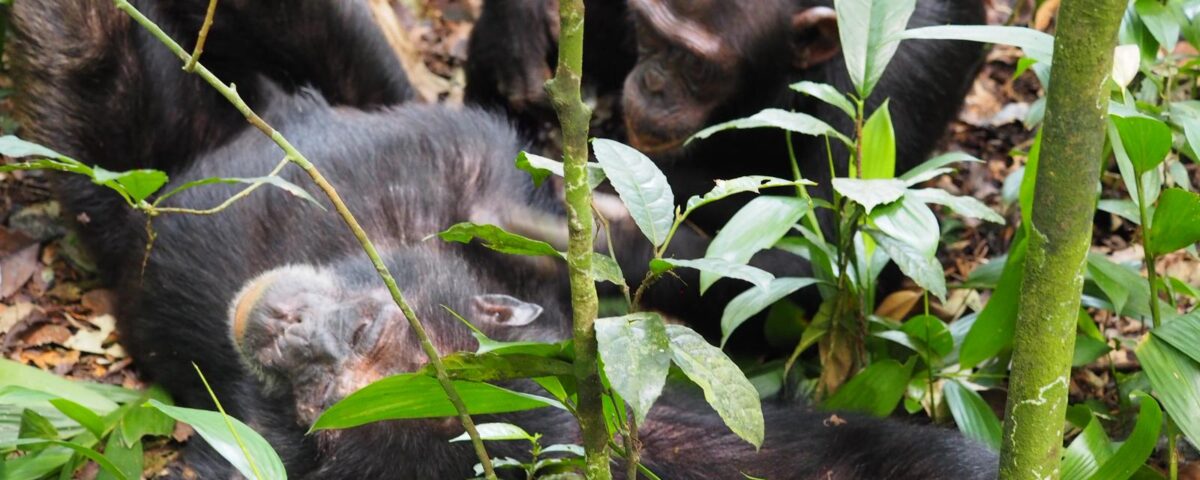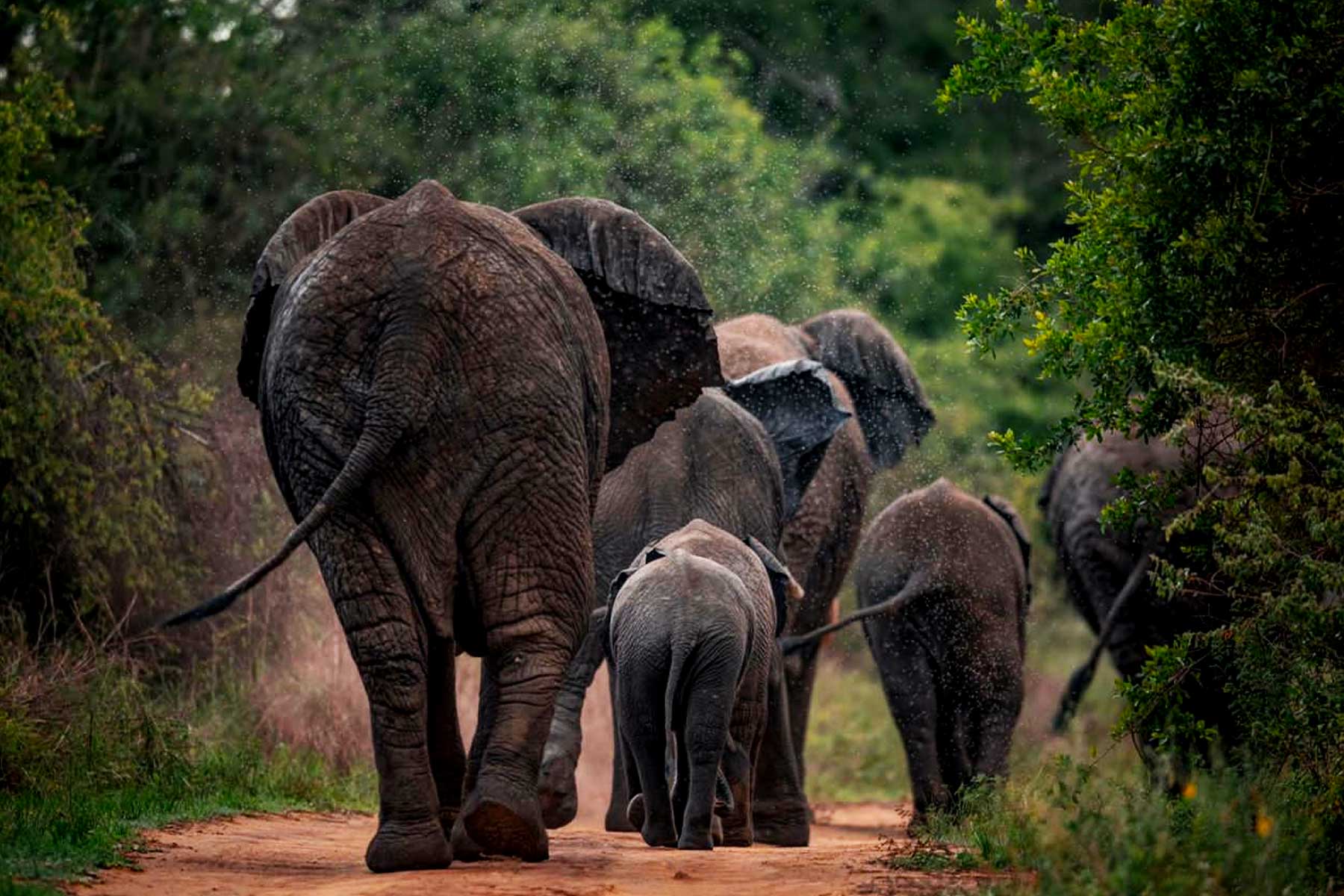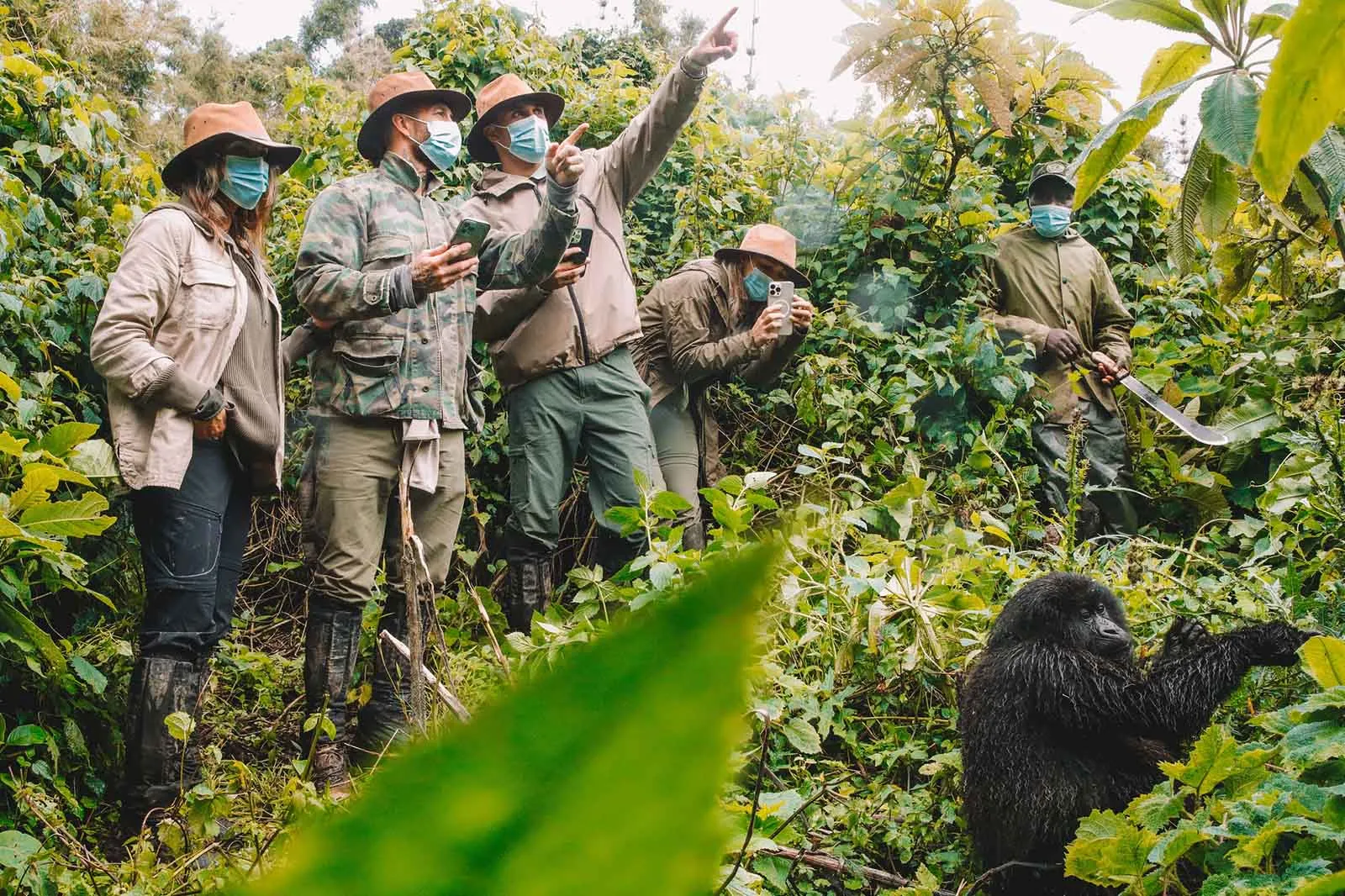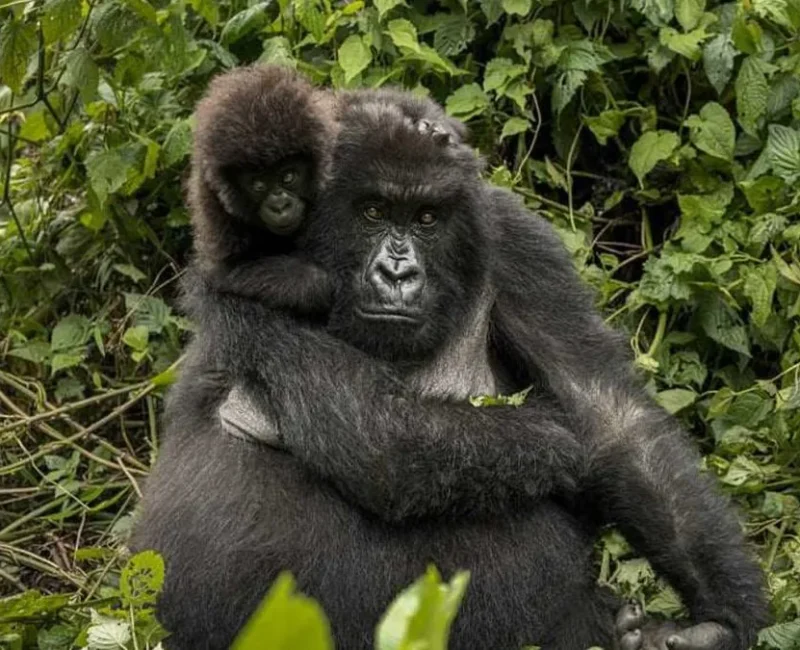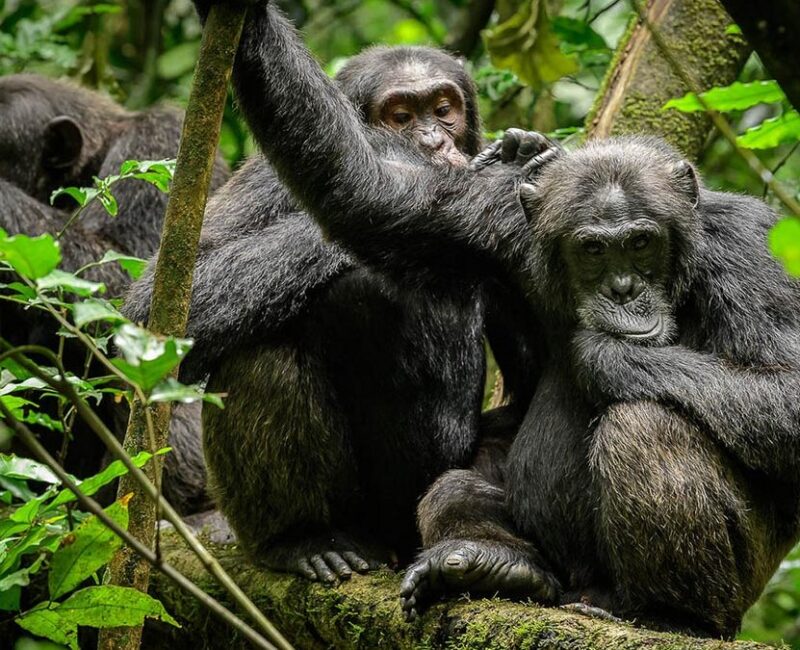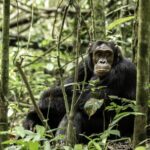
How Climate & Season Affect Primates’ Behavior and Viewing
September 24, 2025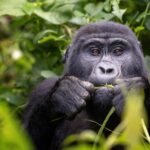
Gorilla Trekking in Mgahinga Gorilla National Park
September 29, 2025Wildlife Corridors & Primate Migration in Uganda
Uganda is renowned for its exceptional Uganda Gorilla Trekking and diverse Uganda Wildlife Safaris, attracting nature enthusiasts worldwide. While the country’s national parks, such as Bwindi Impenetrable, Kibale Forest, and Queen Elizabeth, are prime destinations, the natural pathways connecting these parks are equally critical. These wildlife corridors allow animals, including primates, elephants, and buffalo, to move safely between habitats. Without these corridors, wildlife populations would become isolated, genetic diversity would decline, and ecosystems could collapse.
Wildlife corridors in Uganda support seasonal migration, daily movement, and genetic exchange between fragmented habitats. For primates, including chimpanzees, red-tailed monkeys, and colobus monkeys, these corridors are essential for foraging, social interactions, and survival. They also indirectly sustain Uganda Gorilla Safaris and Uganda Wildlife Tours by maintaining healthy, visible wildlife populations for tourists. Understanding corridors helps travelers appreciate the complexity of conservation efforts while participating in authentic Uganda Safari Holidays that balance tourism, ecosystem health, and local community involvement.
What Are Wildlife Corridors
Wildlife corridors are natural or restored pathways that connect protected areas, allowing animals to move freely across fragmented landscapes. These corridors serve as lifelines for Uganda’s biodiversity, particularly for primates and other wildlife critical to Uganda Wildlife Safaris.
Key Functions of Wildlife Corridors:
- Migration: Corridors enable seasonal movements to access food, water, and breeding grounds. Primates and larger mammals rely on these pathways to survive changing environmental conditions.
- Gene Flow: Corridors allow animals to interbreed between isolated populations, maintaining genetic diversity and population resilience.
- Dispersal: Young animals use corridors to find new territories, preventing overcrowding and competition in limited habitats.
- Access to Resources: Corridors provide safe access to critical resources, particularly in fragmented or degraded landscapes.
For tourists on Uganda Gorilla Trekking or Uganda Wildlife Safaris, corridors enhance viewing opportunities by supporting healthy populations. They ensure that primates, elephants, and other species remain active, visible, and natural in their behavior, which creates a more authentic experience during Uganda Tours and Uganda Safari Holidays.
Primate Migration and the Importance of Corridors in Uganda
One of Uganda’s most important wildlife corridors stretches approximately 180 kilometers between Kibale Forest National Park and Queen Elizabeth National Park. This corridor is a mosaic of grasslands, agricultural lands, and forest fragments that support wildlife movement.
Primate Movement in Corridors:
- Chimpanzees: The corridor allows chimpanzee communities to travel between forest patches, reducing the risk of isolation and promoting healthy social interactions.
- Red-Tailed Monkeys and Colobus Monkeys: These primates rely on corridors to access food and safe sleeping sites, maintaining their survival and reproductive success.
- Other Wildlife: Elephants, buffalo, and smaller mammals also benefit, keeping ecosystems balanced and supporting Uganda Wildlife Tours experiences.
The corridor between Kibale and Queen Elizabeth not only sustains primate populations but also ensures that Uganda Gorilla Safaris remain a rich and fulfilling adventure. By maintaining safe passageways, conservation efforts prevent population fragmentation, allowing tourists to witness authentic primate behaviors and ecological interactions during Uganda Safari Holidays.
Threats to Wildlife Corridors in Uganda
Despite their importance, Uganda’s wildlife corridors face significant threats that endanger both primates and other wildlife.
Major Threats Include:
- Habitat Loss and Degradation: Expanding human settlements and agriculture reduce vegetation cover and fragment habitats, limiting wildlife movement.
- Infrastructure Development: Roads, fences, and urban expansion disrupt the natural connectivity of corridors, isolating populations.
- Illegal Activities: Poaching and unsanctioned resource extraction compromise animal safety and corridor integrity.
- Environmental Factors: Fires, changing rainfall patterns, and climate change further degrade corridor quality, affecting migration routes.
For Uganda Gorilla Trekking and Uganda Wildlife Safaris, these threats can reduce wildlife sightings, limit primate movement, and compromise safari experiences. Addressing these challenges requires coordinated conservation, community engagement, and sustainable tourism practices to maintain both ecological integrity and high-quality Uganda Safari Holidays.
Conservation Efforts for Corridors in Uganda
Several initiatives are actively working to restore, protect, and sustainably manage wildlife corridors in Uganda. These efforts focus on ecological restoration, community engagement, and policy development.
Corridor Restoration and Management:
- Reforestation Projects: Planting native vegetation reconnects fragmented habitats, allowing primates and other wildlife to travel safely.
- Community Participation: Local communities are involved in conservation planning, balancing their livelihoods with wildlife protection.
- Conservation Organizations: Groups like the Wildlife Conservation Society (WCS) collaborate with Uganda Wildlife Authority to develop and implement corridor action plans.
- Policy and Planning: Integration of corridor protection into land-use policies ensures long-term sustainability for migratory species.
For tourists participating in Uganda Gorilla Safaris, these conservation efforts ensure vibrant wildlife populations. Observing primates moving freely across corridors enhances Uganda Wildlife Tours and Uganda Safari Holidays, providing authentic, memorable, and educational experiences.
Cultural Experiences Near Wildlife Corridors and Safari Lodges
Safari lodges situated near wildlife corridors offer more than wildlife viewing; they provide immersive cultural experiences that complement Uganda Gorilla Trekking and Uganda Wildlife Tours.
Cultural Activities for Travelers:
- Community Walks: Engage with local communities to learn about traditional lifestyles and sustainable practices.
- Music and Dance: Enjoy performances that showcase indigenous heritage.
- Craft Markets: Purchase handmade souvenirs supporting local artisans and communities.
- Sustainable Dining: Farm-to-table meals highlight local produce and conservation awareness.
These cultural encounters enhance Uganda Safaris Holidays by connecting travelers with the people who coexist with Uganda’s wildlife. They provide a deeper understanding of conservation, community engagement, and the holistic value of corridors, making Uganda Holidays both educational and memorable.
The Role of Corridors in Tourism and Conservation
Wildlife corridors are essential for the sustainability of Uganda’s tourism industry. By maintaining healthy populations of primates and larger mammals, corridors guarantee authentic wildlife encounters for Uganda Gorilla Safaris, Uganda Wildlife Safaris, and Uganda Tours.
Benefits of Corridors for Tourism:
- Authentic Wildlife Viewing: Animals exhibit natural behaviors when corridors allow free movement.
- Genetic Health and Population Resilience: Corridors maintain robust wildlife populations, ensuring long-term ecological balance.
- Sustainable Tourism: Conservation-linked tourism strengthens community support and global credibility.
Tourists supporting Uganda Safaris Holidays indirectly contribute to corridor protection. This synergy between conservation and tourism reinforces Uganda’s position as a leading destination for eco-friendly wildlife experiences.
Securing the Future of Wildlife Corridors and Primate Migration
Wildlife Corridors & Primate Migration in Uganda demonstrate the intricate link between conservation, tourism, and community engagement. Corridors like the Kibale–Queen Elizabeth pathway are vital for primate survival, ecosystem stability, and maintaining authentic Uganda Gorilla Safaris.
Despite challenges from habitat loss, climate change, and human activity, restoration initiatives show promise. By integrating community involvement, policy support, and conservation planning, Uganda ensures corridors remain functional. For travelers, understanding the importance of corridors adds depth to Uganda Wildlife Tours and Uganda Safari Holidays, creating meaningful experiences that combine wildlife observation with cultural immersion. Protecting corridors today ensures the longevity of Uganda Holidays, sustaining primates, other wildlife, and unforgettable safari adventures for generations to come.

